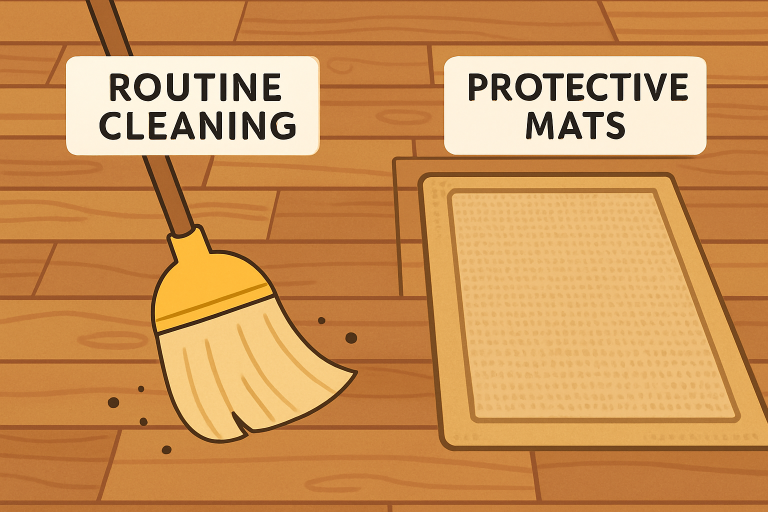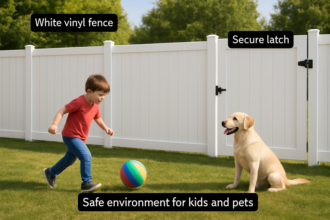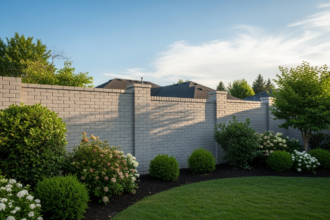Keeping Your Floors Flawless: Proven Care and Cleaning Tips

Engineered hardwood floors bring the natural warmth and aesthetic of wood while offering increased resilience, making them a popular choice for modern homes. Proper maintenance preserves their beauty, boosts lifespan, and protects your investment. If your floor starts showing signs of age or wear, consider wood floor refinishing as a solution to restore its original luster and integrity. Understanding the best cleaning and care practices will ensure your floors remain vibrant and durable for years. Knowing how to manage daily care, respond to spills, and implement measures to address environmental factors are crucial parts of engineered hardwood upkeep. Taking proactive steps not only enhances appearance but also prevents costly repairs down the line. Most importantly, regular attention safeguards floor performance against common threats such as scratches, dents, humidity swings, and sunlight exposure.
Table of Contents
Regular Cleaning Practices
Routine cleaning is vital for maintaining engineered hardwood floors. Use a soft-bristle broom or a vacuum with a hardwood floor attachment to regularly clear away dust and debris, which can scratch the surface. For more thorough cleaning, lightly dampen a mop with a pH-neutral cleaner formulated for wood. Excess moisture is a prime enemy, so always ensure your mop isn’t too wet. To shield high-traffic areas from grit and scuffs, strategically position rugs and mats, especially near entryways and in hallways. According to Better Homes & Gardens, regularly shaking out these rugs helps prevent dirt build-up beneath them, reducing abrasive effects on your floor’s finish.
Controlling Indoor Humidity
Engineered hardwood’s layered construction imparts improved moisture resistance, yet fluctuating humidity remains a real threat. Keep your home’s relative humidity in the 30–50% range. In drier months, a humidifier can prevent shrinkage that leads to unsightly gaps, while a dehumidifier in humid weather will halt swelling and warping. Installing a hygrometer offers an ongoing gauge of your indoor air moisture, letting you address problems before they take a toll.

Protecting Against Scratches and Dents
Shoes, sliding furniture, or untrimmed pet nails are leading causes of floor gouges and scuffs. Affix felt pads to all furniture legs, and consider using wide, non-staining area rugs or runners in high-traffic areas. Promptly sweep up sharp-edged debris like pebbles that can grind into the finish when walked across. According to Architectural Digest, regular grooming significantly reduces accidental claw marks.
Choosing the Right Cleaning Products
Not all cleaners are safe for engineered hardwood. Steer clear of harsh chemicals, abrasive powders, or anything containing vinegar or ammonia, which may strip the protective layer, leaving floors dulled or stained. Use only floor-specific, pH-neutral products recommended by your floor’s manufacturer to preserve both looks and strength. Brands like Bona are often recommended for their wood-safe formulas. Be wary of “all-purpose” cleaners, as many are unsuitable for wood surfaces.
Managing Sunlight Exposure
Excessive sunlight can bleach or discolor hardwood flooring over time. Install window coverings, such as blinds or UV-filtering curtains, to limit direct sunlight, especially in south-facing rooms. Every few months, rotate rugs and rearrange furniture to promote even aging and prevent irregular patches of fading or yellowing across the floor.
Addressing Spills Promptly
Moisture is a primary threat to engineered hardwood, so always address spills immediately. Blot liquids with a dry or just-damp cloth, and ensure no water remains by thoroughly drying the area afterward. Never use overly wet mops or steam cleaning devices, as excessive moisture may seep through seams and damage the core layers beneath the wood surface.
Regular Maintenance and Refinishing
With time, even the best cared-for floors will inevitably show wear. Engineered hardwood can usually be refinished once or twice, depending on the thickness of the veneer layer. Surface scratches, dull spots, or minor dents don’t require full replacement; professional refinishing can restore much of the original appearance and protective finish. If you’re unsure whether your floor can handle another sanding, consult a qualified hardwood floor specialist to inspect your specific product. Regularly scheduled inspections and deep cleans further extend the life of your investment, delaying the need for major restoration.
Conclusion
Proper maintenance of engineered hardwood floors blends simple daily habits with periodic professional care. Regular cleaning, effective humidity management, careful selection of cleaning agents, and routine protective actions create a resilient, attractive flooring surface. By staying proactive and attentive, you ensure your floors deliver lasting appeal, comfort, and value for many years to come.






